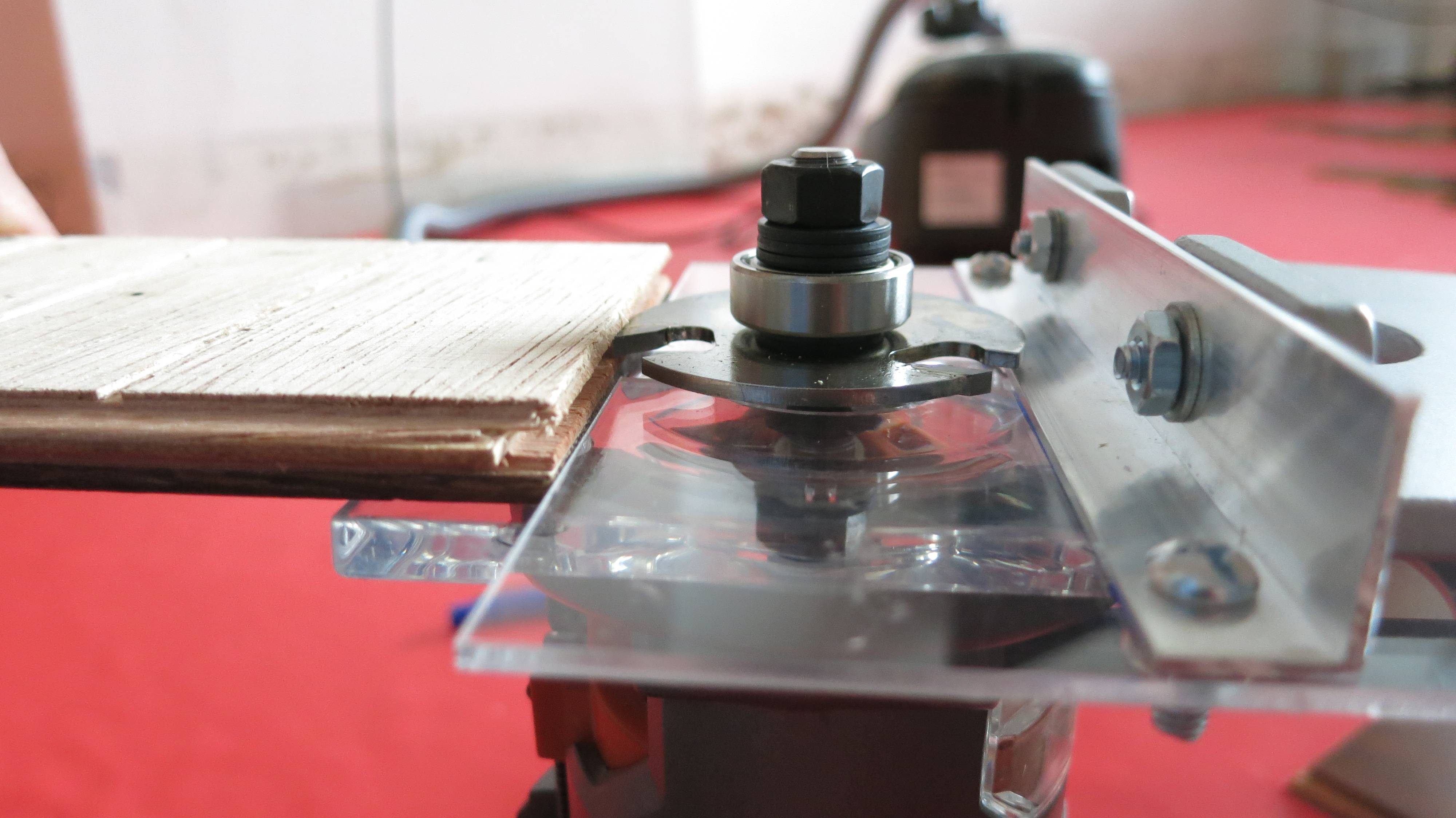I order this 3/32 slotting bit from Amazon.

Shank size 1/4, depth of cut up to 9/16. I only need 3/8 depth (slightly over is ok), but I could not find the right bearing. There are router bearing sets sold on the internet, but they are very sparse with descriptions. Can someone recommend the right bearing or a set that will do the job?
The application is to convert tongues to grooves in engineered flooring for this project.
Update: I ended up making my own rip-fence, since the router's rip-fence could not accommodate a bit this wide at a shallow depth that my project required. Certainly not the prettiest thing, but served the purpose well. I was amazed at how smoothly it cut grooves in engineered hardwood flooring. When I first tried it out, I barely felt any resistance. It practically evaporated the material, rather than chipping it away.




